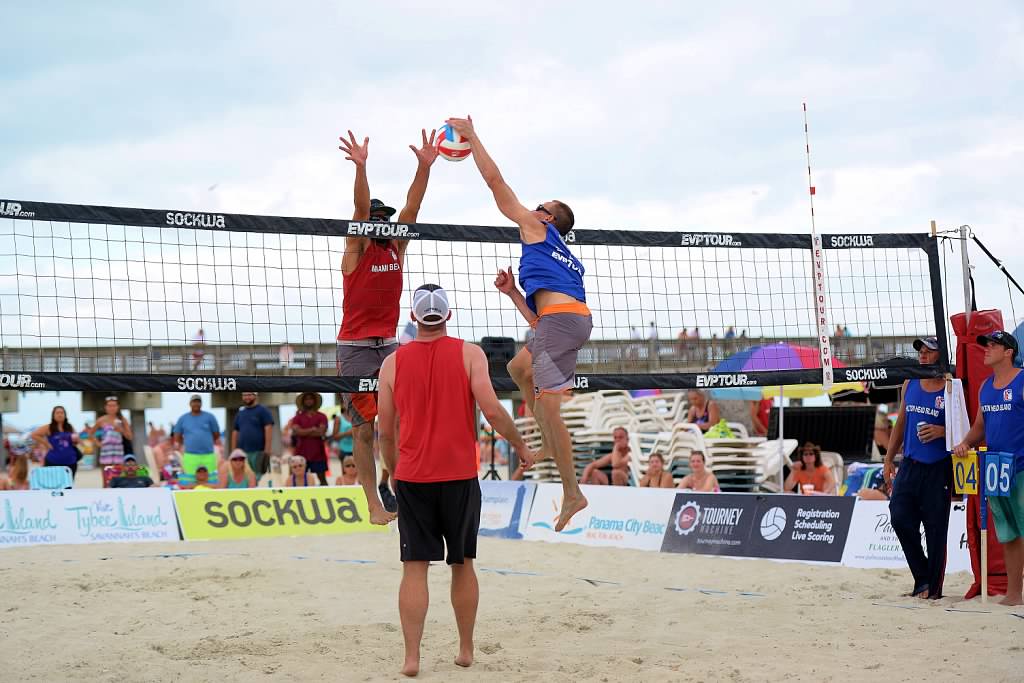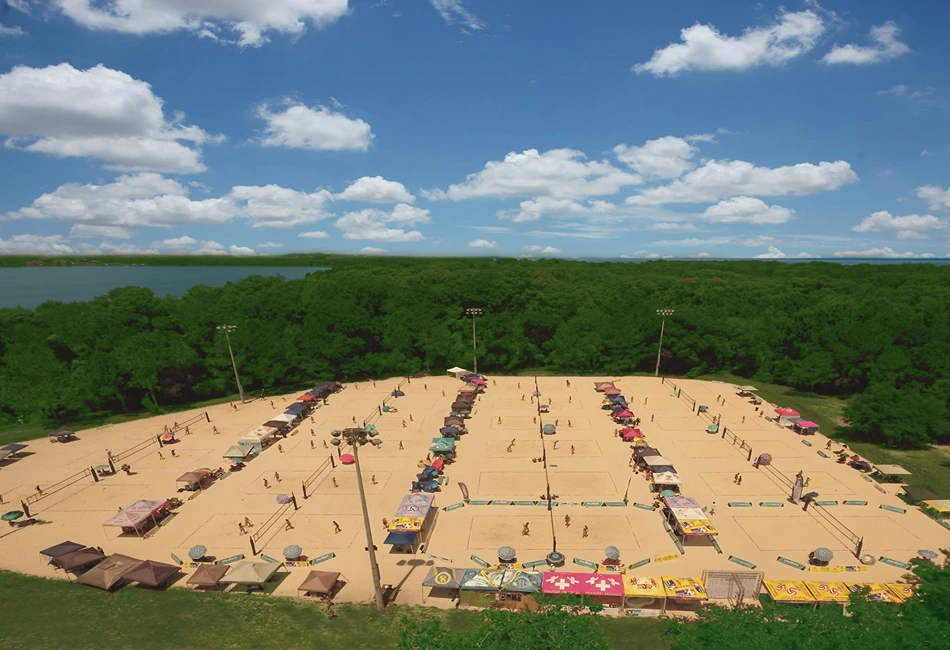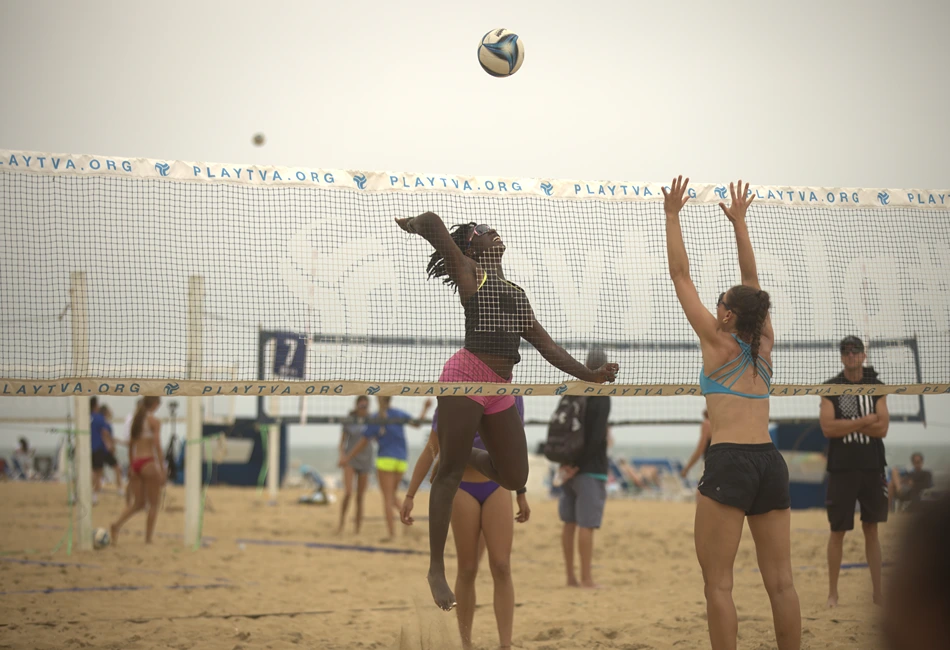How sports like beach volleyball and beach soccer are becoming strong contenders in the world of sports tourism
From beach volleyball courts lining the coasts to the fast-paced action of beach soccer on compact fields, beach sports variants are gaining traction not just as recreational activities but as competitive arenas that attract serious players and growing fan bases. The rise of beach sports is fueled by shifting consumer interests, appeal among those disassociated from traditional sports, increased media visibility, and grassroots programs designed to nurture the next generation of athletes.
While there are many varieties of beach sports, we’ll examine two thriving sectors with significant numbers, growing youth movements, and the initiatives that are propelling these beach variant sports to new heights.

Beach volleyball is still at the top of the crop
Beach volleyball has experienced significant growth over the past two decades, cementing itself as a professional sport and a staple of both amateur events and recreational summer fun. Between 2012 and 2015, participation nearly tripled in the college sector, according to the NCAA, and the momentum hasn’t slowed. By 2023, the sport reached new heights, boasting a record 91 programs and 1,615 athletes competing at the collegiate level.
Youth participation in beach volleyball has also surged, driven by grassroots initiatives such as local tournaments, coaching clinics, camps, and additional means. Many players begin their careers in youth divisions, with national tournaments offering avenues for advancement and exposure.
The sport’s official Olympic inclusion has also boosted its visibility, with events like the FIVB Beach Volleyball World Tour adding global prestige and attracting international stars.
Professionally, the 2024 Volleyball World Beach Pro Tour set a record with a total of 10 Elite16 events, eight Challenge stops, and 35 Futures events across 20 countries. This not only creates more professional opportunities within the sport but also provides additional avenues for fans and aspiring athletes to engage with top talent. More eyes on the sport equals opportunities for growth in the United States.
There are, however, some challenges to consider. The sport faces competition from other beach sports, and it struggles with the number of facilities to support its increasing popularity. Efforts to bolster youth programs have shown positive signs of success, though, and local organizations, particularly those focusing on women’s beach volleyball, are vital to maintaining this upward trajectory to ensure that the next generation has the resources to compete.

Beach soccer’s global push in a World Cup year
Beach soccer is carving out its own path as an alternative to “the beautiful game,” and its growth is marked by strategic initiatives from organizations designed to ensure long-term development.
Raquel Gamez, Director of Marketing at Beach Soccer Worldwide (BSWW), emphasized that supporting grassroots programs and organizing youth competitions are key initiatives that all organizations must adopt. “We work closely with local federations, clubs, and academies to introduce coaching programs, share resources, and encourage youth participation in the sport,” said Gamez. These efforts align with BSWW’s global approach, which focuses on fostering talent across various communities across the globe.
A central part of the movement is the emphasis on gender equality. Gamez highlights the significant strides BSWW has made in expanding women’s competitions, offering female athletes increased visibility, and providing platforms for them to compete at higher levels. “We have made significant strides by expanding women’s competitions, increasing visibility, and providing more platforms for female players to showcase their talent,” Gamez added.
Outreach programs include community-driven clinics and youth tournaments, ensuring that children from diverse backgrounds are introduced to beach soccer. This effort, coupled with a global outreach strategy, ensures that beach soccer reaches new regions and fosters inclusivity.
2025 will be a significant year for growing the game in the United States and across the globe as the FIFA Beach Soccer World Cup will take place from May 1–11, in the picturesque Seychelles. It will be the first time an African nation hosts the competition, and reigning champions Brazil will be looking to keep the crown. As we’ve seen in the past with other World Cup competitions, with the right marketing and televised games, it could propel its popularity and see a rise in youth participation. The key will then be maintaining that increase.
The future of beach sport variants
Beach sports are no longer just about having fun in the sun; they are becoming an integral part of the sports tourism landscape.
While beach volleyball and soccer have their own unique challenges, they do share a common thread in their overarching growth. Like traditional sports, youth movements and programs, along with rising gender equity initiatives and more accessibility efforts, are all key initiatives. Uniquely, even with waterfront beaches to utilize, the emphasis on community and facility sand court development, especially in underserved areas, provides everyone an opportunity to play, maxing out their potential.
By Christopher D. Silbernagel





